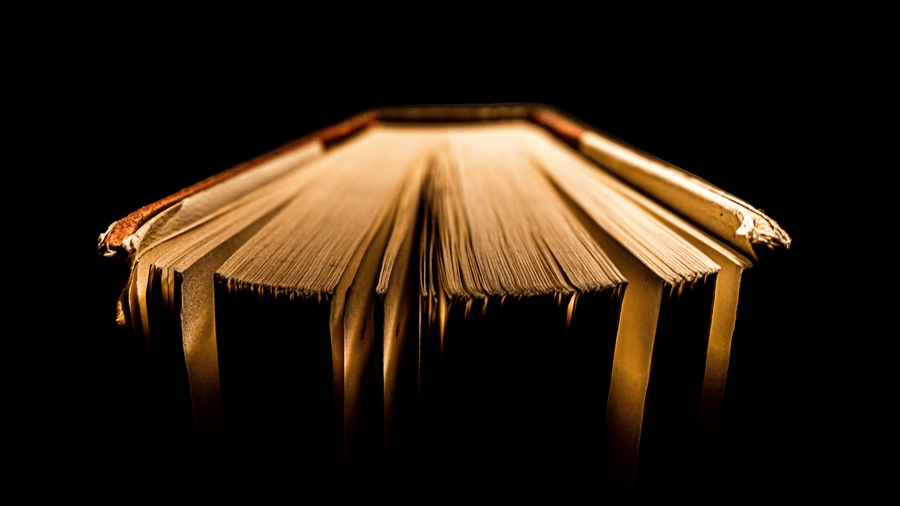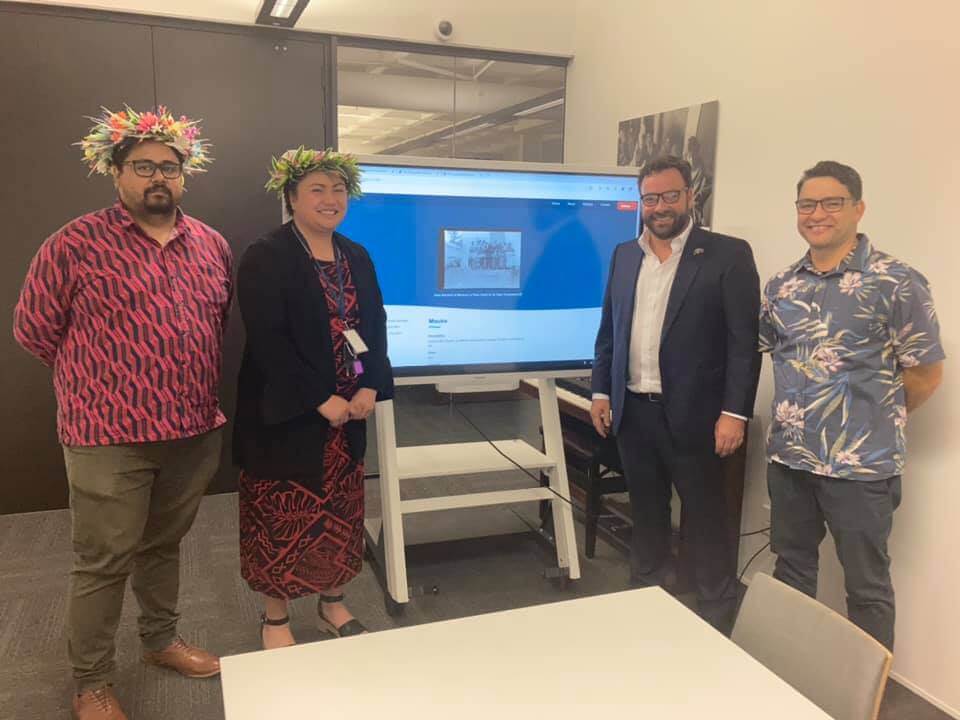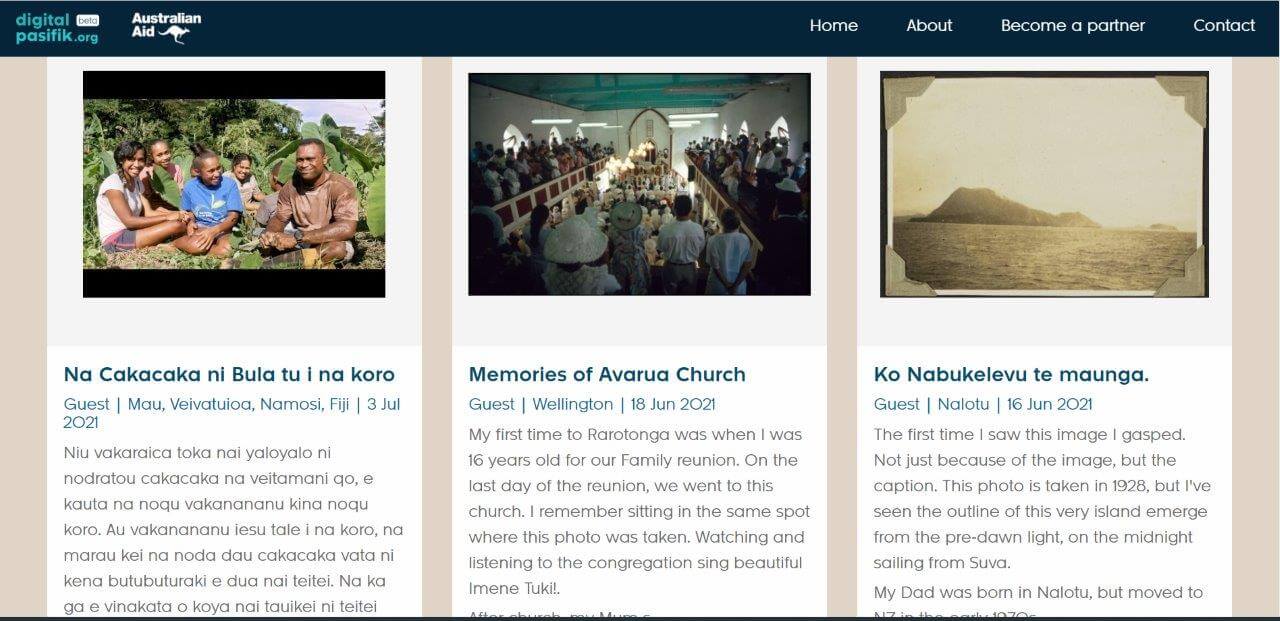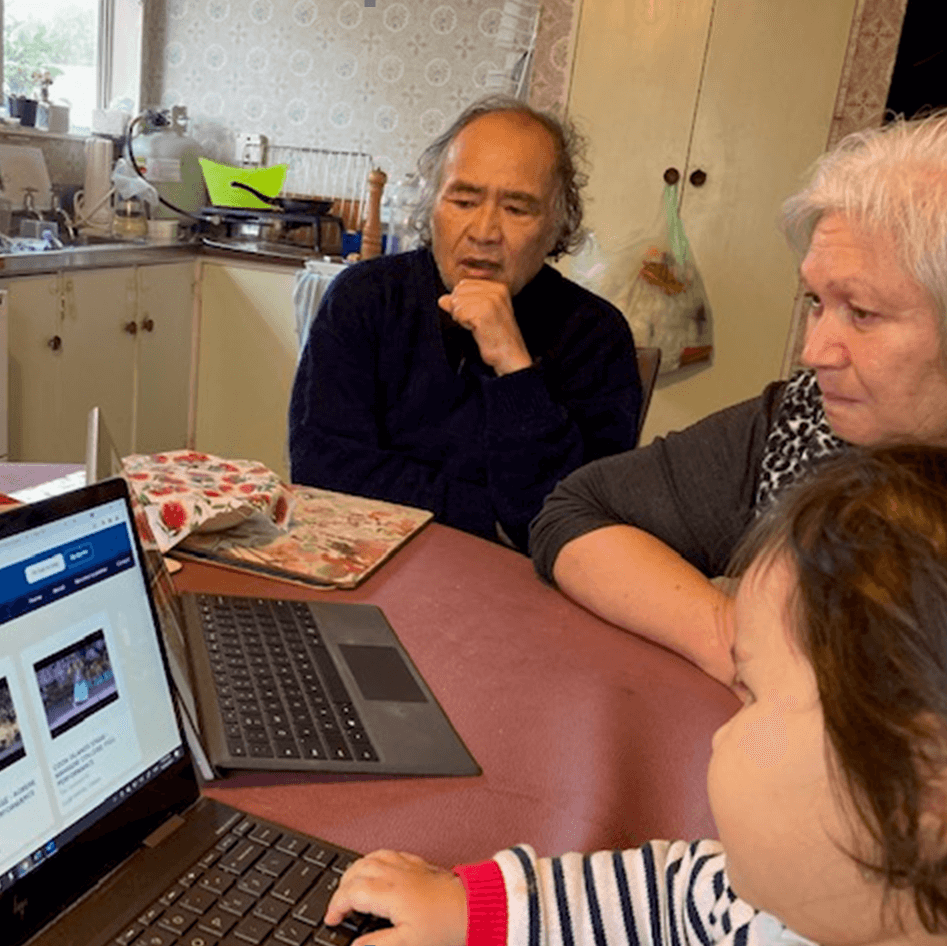Shining a light on Pacific treasures


Pacific Virtual Museum pilot team with Dr Chris Watkins
Our Pacific treasures are being given new life by being made visible and accessible on the digitalpasifik website. This website is the key part of the Pacific Virtual Museum (PVM) pilot project and is led by the Programme Manager, Tim Kong.
The hardworking team include Ulu Afaese, Content Analyst and Taputukura Raea, Engagement Manager for the Pacific Virtual Museum. Taputukura deals with outreach to museums, galleries, libraries, archives and community groups who hold Pacific heritage collections. For her, the pilot project is about bringing Pacific collections and heritage items together on one site to make them accessible for Pacific people to find and see.
Taputu took me through a short but enlightening journey about the process the PVM team have been through.
How did you and the team come up with the name DigitalPasifik? Coming up with the name for the site was a challenge. We were meant to be meeting in Auckland in March of 2020, which obviously didn’t happen because of Covid-19, and if we'd done that and everyone was in the same room, I think it would’ve been a little easier to have the discussion we needed. Maybe, maybe not. There’d probably be a bit more arguing but at least we’d have been able to work it out in a few sessions (laughs).
I think Covid-19 has helped our process in some ways, but sometimes it hasn’t helped. So for example, it’s allowed people that couldn’t make the in-person workshop, to be involved in the conversations remotely, because we've done everything via Zoom and email. But it’s hard that we can’t travel to them and also means there's people across the Pacific that we haven’t connected with.
There were a lot of conversations about which language to use for the name. We wanted to combine the idea of 'Pacific collections' and 'digital', but also to keep it a basic name, to the point and not a name that over-promised anything. We decided in the end to use English and the Tok Pisin language. English because that is the language, however problematic, that enables everyone across the Pacific to be included. And Tok Pisin to acknowledge the importance of an indigenous perspective. Tok Pisin is an official language of Papua New Guinea and one of the most widely spoken on what is the most populous Pacific Island nation.
How has the journey been so far?
I think it’s been great. We’ve been working with a vendor who have really bought into a Pacific way of approaching this work, they've listened to all the changes, designed really sensitively and developed a website that’s really quite different and focused on the needs of Pacific people. We’ve worked with a co-design group of experts that’s based in the Pacific and around the world. It has been great because we get their feedback straight away and then the vendor is able to implement that directly into the site.
The core design, build and functionality of the site was built in 20 weeks, and that work began in the first week of Level 4 lockdown here in NZ, which meant a lot of it was done entirely remotely and using online tools like Zoom and email. Lots of Zoom!

Taputu and her Dad at the public event to launch digitalpasifik.org
What has been one of the highlights of engaging with different institutions?
Recently we’ve got the Solomon Islands National Museum onboard as a content partner. We contacted them through the Solomon Islands’ High Commission here in Wellington. We had a meeting with the Commissioner, and he was able to connect us with people at the museum. Our first meeting with them was in May of 2020, and we couldn't use Zoom or Skype, we had to go old school and ring them. (laughs)
We then had to talk them through the website design just using our voices, because we couldn’t show them anything, because we were only on a voice call and had no screen sharing. At that point in 2020, they couldn’t share their collections because they didn’t have the resources to digitise them. In May of 2021, they emailed us to say that they have a YouTube channel now and could we please share that.
To see the progress was fantastic as it ensured that they could be involved in the project. It's important to us that these Pacific Island institutions do the digitising in their own way and retain all the control and authority over the content. I’ve been advertising their content on our Facebook channel and that’s got the most hits. A lot of Solomon Islanders have been messaging us wanting to know more, so I’ve been responding to them on Facebook.
How has it been collaborating with those in the Pacific?
It’s been a pretty slow process because they don’t have the resources or the budgets of New Zealand or Australian based institutes. We're also really aware of the reality and impact of Covid-19 across the Pacific, particularly in places like Fiji and Papua New Guinea. Lastly, we recognise that we need to wait for internal processes in these places to be worked through.
We aim to support any Pacific based institution within our scope, but also want to lift them up and support their outreach and content as much as we can. We're excited by the number of content partners based in the Pacific though, and always keen to have more on board.
As well as the Solomon Islands National Museum, another institution it's exciting to have on board is the Micronesian Seminar and they’re based in Chuuk. They already had a website, but they had been waiting for 10 years to try and upgrade it. Ulu did some awesome work to get their existing records showing on the site. It’s amazing when Pacific organisations and individuals can be in the position where they can share their collections with us.
How do you think this site can help Pacific communities?
In regards to my family, it’s about being able to sit with my parents and getting them to look at what we’ve got on our website which then brings up stories that we’ve never heard about. From viewing the old archives, movies and images on the website, Mum starts sharing stories like “Oh we used to go and steal the flowers from this lady’s house and eat them." (laughs)
Embedded content: https://youtu.be/vv5fSguATqQIt’s those kinds of stories that really inspires us because we didn’t grow up in the Cook Islands, we didn’t get those experiences first hand but by hearing our parents tell their stories, we get to be a part of that. My hope is that this experience will be repeated by any who use our site.
Can you share with us the new 'Contribute your Story' function on the site and how it works?

Screenshot of 'Contribute your Story' function on digitalpasifik.org
At the start of the project, we always wanted to have a place that Pacific people could voice their history, opinions and knowledge on the collections. If we look at the records from our content partners, we share the knowledge that the content partner has attached to it, and often that information, what we call 'metadata', doesn’t give Pacific people any experience, knowledge or insight about the record. As many of these records are from a long time ago, it can be difficult to add any context or detail to them. Images are often only labelled with the Western names, or only describe what's in the image. So most photos of people have no names. This makes the experience challenging, and it's almost like looking at a bland canvas.
This function is a really different way for Pacific people to share some knowledge, detail or a memory about the record or image. When they write a story, we wanted to acknowledge that the words they write are their stories and nobody can take that away from them. We worked with the legal team to make sure that those words held only on our website. Those stories and the knowledge in them don’t go back to the content partner. If a content partner want to get in contact with that person, they must go through us. If the contributor says "No I don’t want to be contacted", then we will respect that.
My parents and I were looking through the photos and then my Dad saw his Aunty on the website. In 1989 he took our whole family back home to the Cook Islands and we got to experience what he used to do when he was a kid. That was his first time back in nearly thirty years!
The Mama that was in the photo was his Aunty and we stayed with her for the duration of our trip. I showed the photo to my Cook Island class and one of the ladies recognised her as her great grandmother. At first she didn’t recognise her because she has only ever seen her in her golden years. It was cool to share that with the class because we’re providing a pathway for our Pacific people to connect with their own heritage.

Taputu's parents and neice using laptops to explore the site.
We hope this function provides an opportunity to rebalance the stories we tell about the historical record of the Pacific, and in particular bring a Pacific perspective to these records. We would really like to have more people use this feature, so that these items and images can be brought to life.
Hero image by Mishaal Zahed on Unsplash
Welcome and warm Pasifik greetings
The information on this site has been gathered from our content partners.
The names, terms, and labels that we present on the site may contain images or voices of deceased persons and may also reflect the bias, norms, and perspective of the period of time in which they were created. We accept that these may not be appropriate today.
If you have any concerns or questions about an item, please contact us.